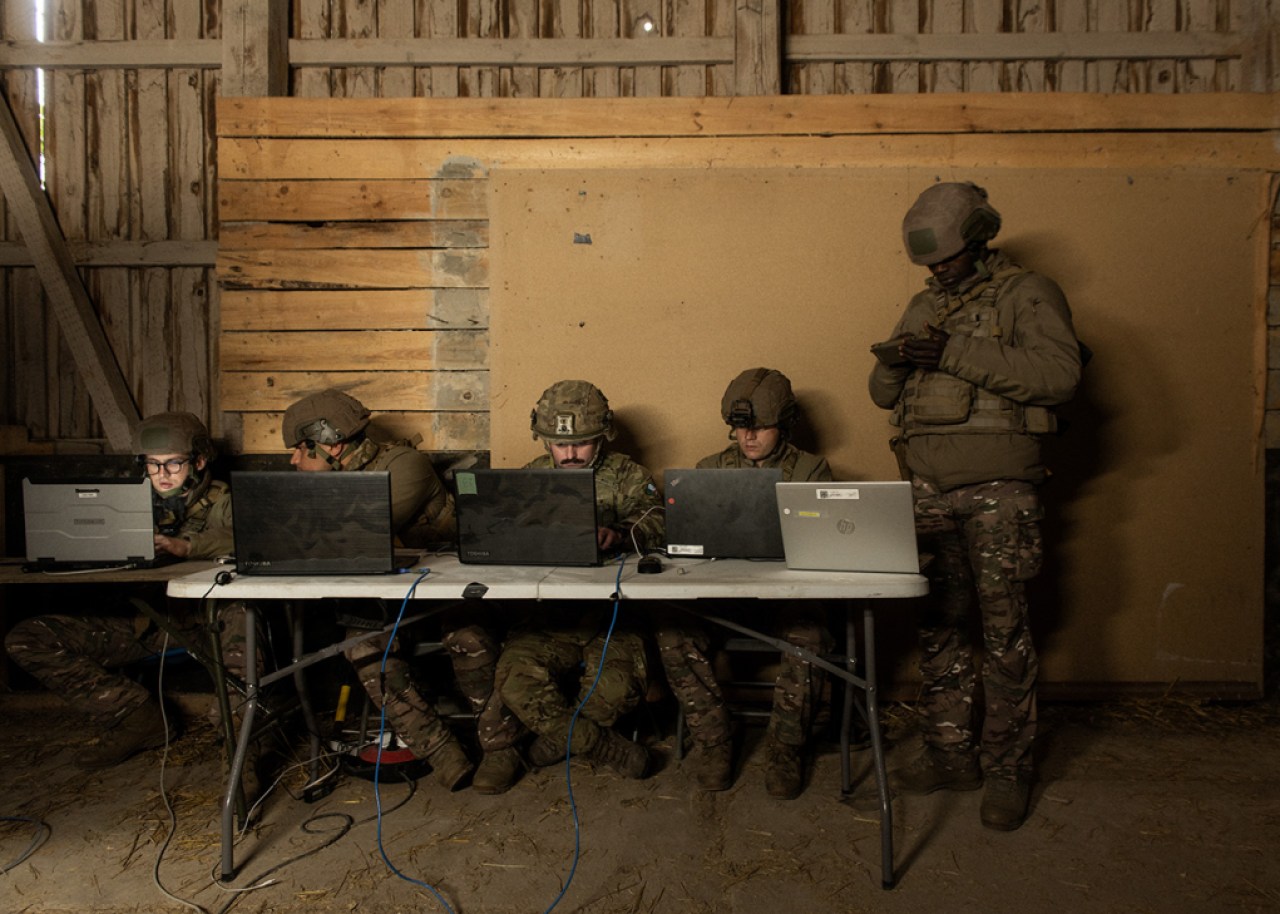 Banding together: A tactical command post with British and French soldiers
Banding together: A tactical command post with British and French soldiers
“Quick, get in and close the door,” says colonel Jean Philippe, commanding us inside an abandoned barn in the Estonian countryside. Here, near the town of Võru, Philippe and other soldiers from the French marines have set up a tactical-command post to monitor enemy troop movements and to hide their equipment – light armoured vehicles such as Panhard-made VBLLs, armoured personnel carriers and ammunition – from the enemy drones humming overhead. The symbolism is not lost on anyone as this former Soviet kolkhoz plot plays host to a makeshift refuge in a war simulation, part of Exercise Hedgehog – a Nato training operation designed to test the alliance’s ability to rapidly deploy and integrate foreign forces to defend the Baltic frontier against potential Russian aggression. Philippe’s battalion is part of the 900-strong French contingent at the exercise, which is Estonia’s largest ever, attracting more than 18,000 Estonian and Allied troops from countries such as the UK, the US, Canada, Sweden and Finland.
This quiet moment of camouflage, far from the public eye, is a microcosm of the broader security challenge confronting Europe. Against the backdrop of Russia’s invasion of Ukraine, Estonia and its allies are preparing for a future where military readiness is not theoretical but essential. “This exercise is about making the unreal feel real,” says Major Hamish Waring, who is second-in-command of the 2 Scots Battle Group, a unit deployed here as part of the UK’s contribution to Nato’s Forward Land Forces (FLF). Monocle meets him after the day’s drills at a small command post hidden in a forest bunker just a short drive from Estonia’s border with Russia. “We’re here to establish a main defensive area to simulate protecting Estonia from an aggressor,” he says, while glancing at a map dotted with troop movements. “Right now our ‘enemy’ is a Swedish battle group – but in reality, if conflict broke out, they would be our allies”, he says, alluding to the newest member of the 32-country alliance. His words underscore a key purpose of these exercises: interoperability. It’s a fancy word to describe the alliance’s biggest challenge in face of a rising threat – how to make its troops – with various languages, combat systems and procedures – united and battle ready, despite never having fought wars together.
 British Army soldier Stuart McGregor
British Army soldier Stuart McGregor
 French marine soldier at a tactical command post
French marine soldier at a tactical command post
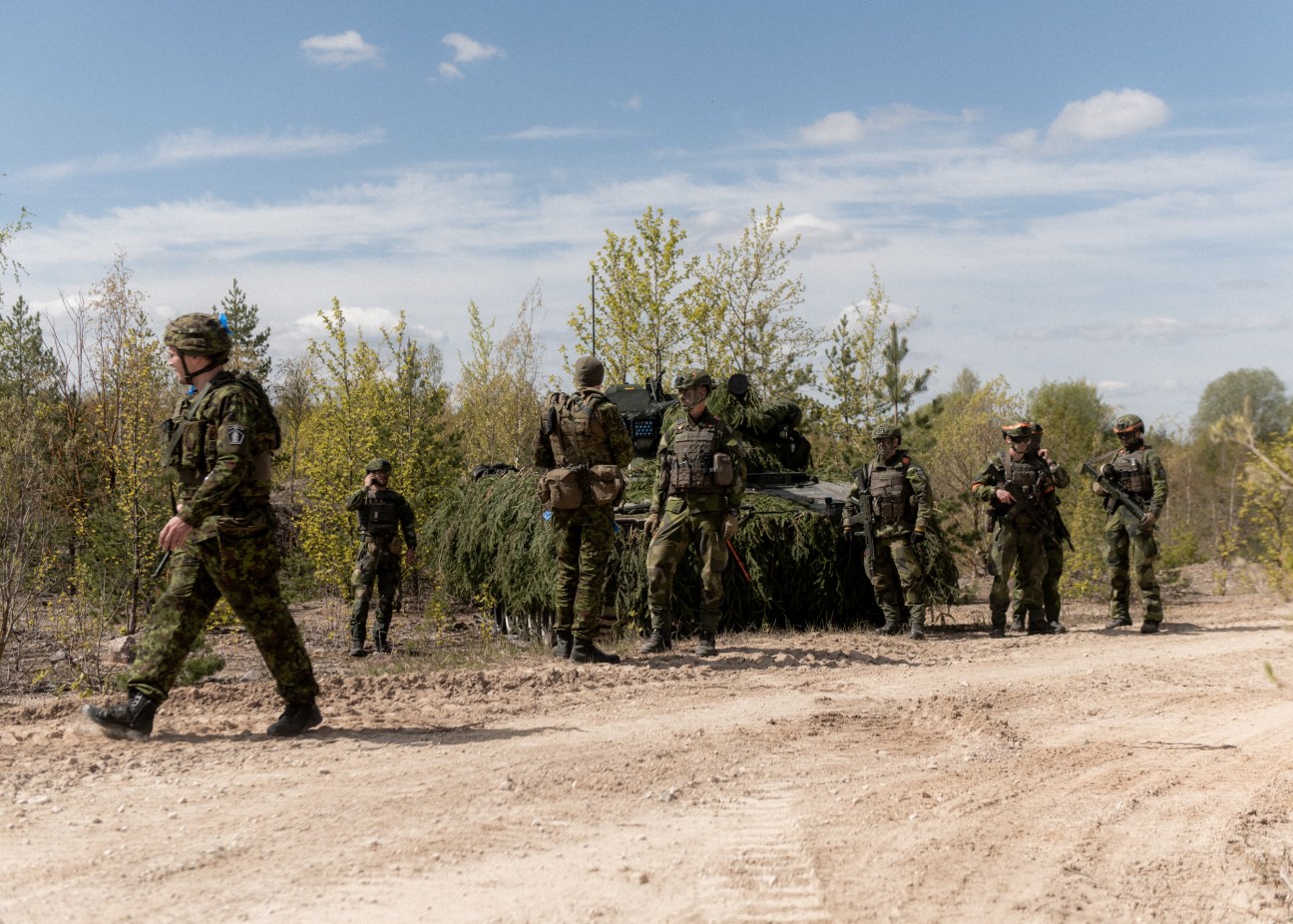 Swedish soldiers from the South Skåne Regiment P7 and a Hägglunds CV90
Swedish soldiers from the South Skåne Regiment P7 and a Hägglunds CV90
“The biggest challenges are practical,” says Waring. “Different armies use different equipment, communication systems and military jargon. Getting all the pieces to work together smoothly takes time.” He describes scenarios where two units might have incompatible radios or where terminology differences could cause confusion. “It might seem small but on a battlefield a misinterpreted message can have serious consequences.” Language adds another layer of complexity. “The British aren’t the best at languages,” he says, “and while many allies speak excellent English, there are nuances – precise descriptions and tactical terms – that need clarity.” Lieutenant Colonel Henrik Rosdahl, commander of the Swedish troops taking part in Hedgehog that consists of soldiers from the South Skåne Regiment P7, echoes this sentiment when Monocle meets him and his troops at a nearby training ground. “We’ve all trained extensively on procedures but integrating forces with different languages and cultures is like learning to dance together when you have each learned different steps,” he says, standing beside the Swedish-made Hägglunds CV90 combat vehicle equipped with a 4-metre long 40mm turret.
Given Estonia’s small size, war games such as Hedgehog cannot only be confined to military training grounds. A case in point: a local farmer has invited troops from the First Regiment of the Royal Canadian Horse Artillery (despite the name, Monocle didn’t see any horses) to set up their 155mm M777 howitzer on his private land. Monocle meets them as they are engaged in moving the large artillery piece to a new location as part of a training drill in which the Canadians play the “opposing force”, as Lieutenant Colonel Jordan Beatty puts it. Some of his soldiers from Manitoba are less diplomatic and say that they are “playing the Russians”. “We’re not used to practicing in public like this outside military bases,” says Beatty. “But that’s part of learning how to defend allies such as Estonia; we need to adapt to their way of doing things.”
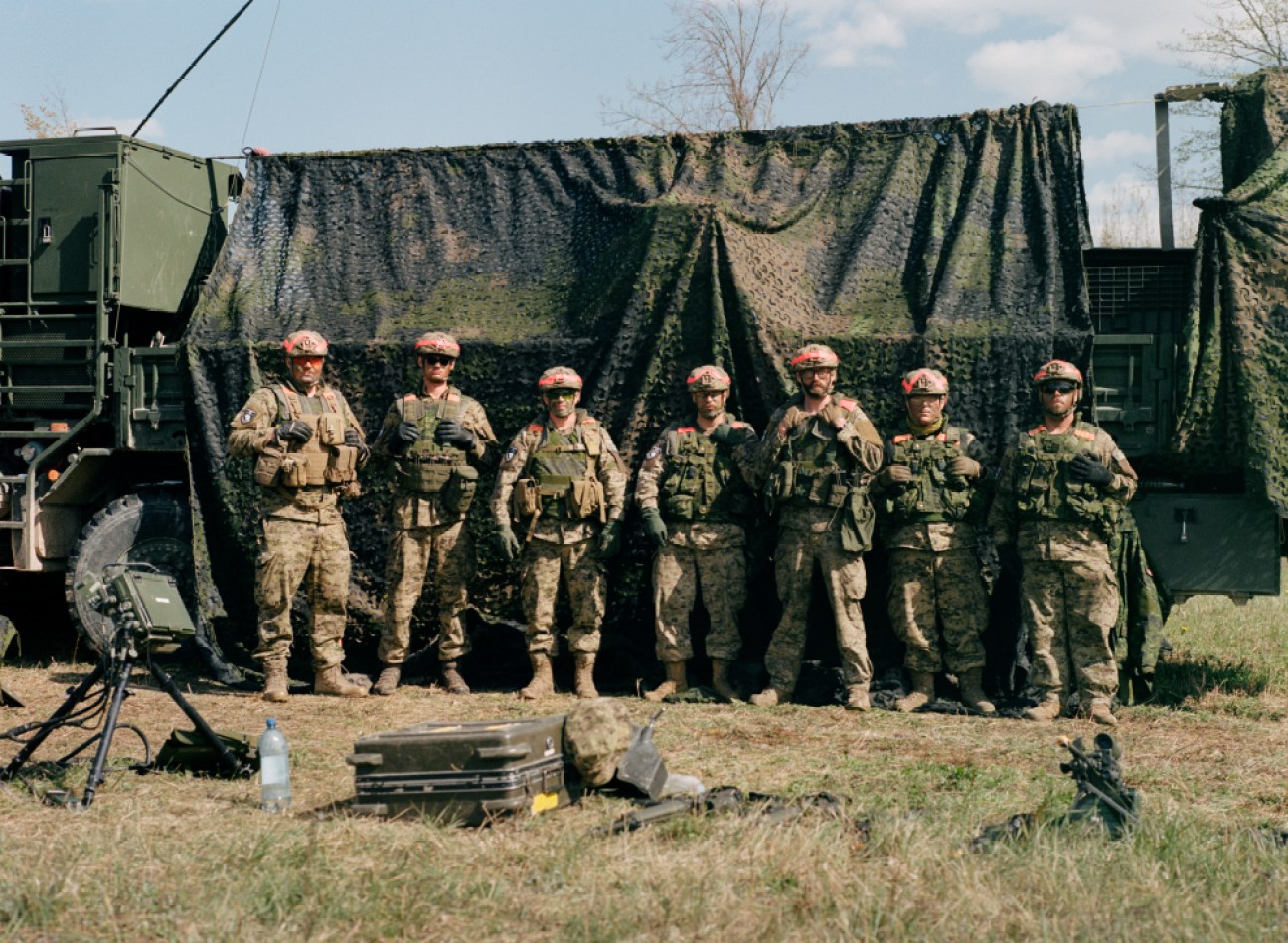 Soldiers from the Royal Canadian Horse Artillery
Soldiers from the Royal Canadian Horse Artillery
 Verne, Estonian conscript manning a traffic stop
Verne, Estonian conscript manning a traffic stop
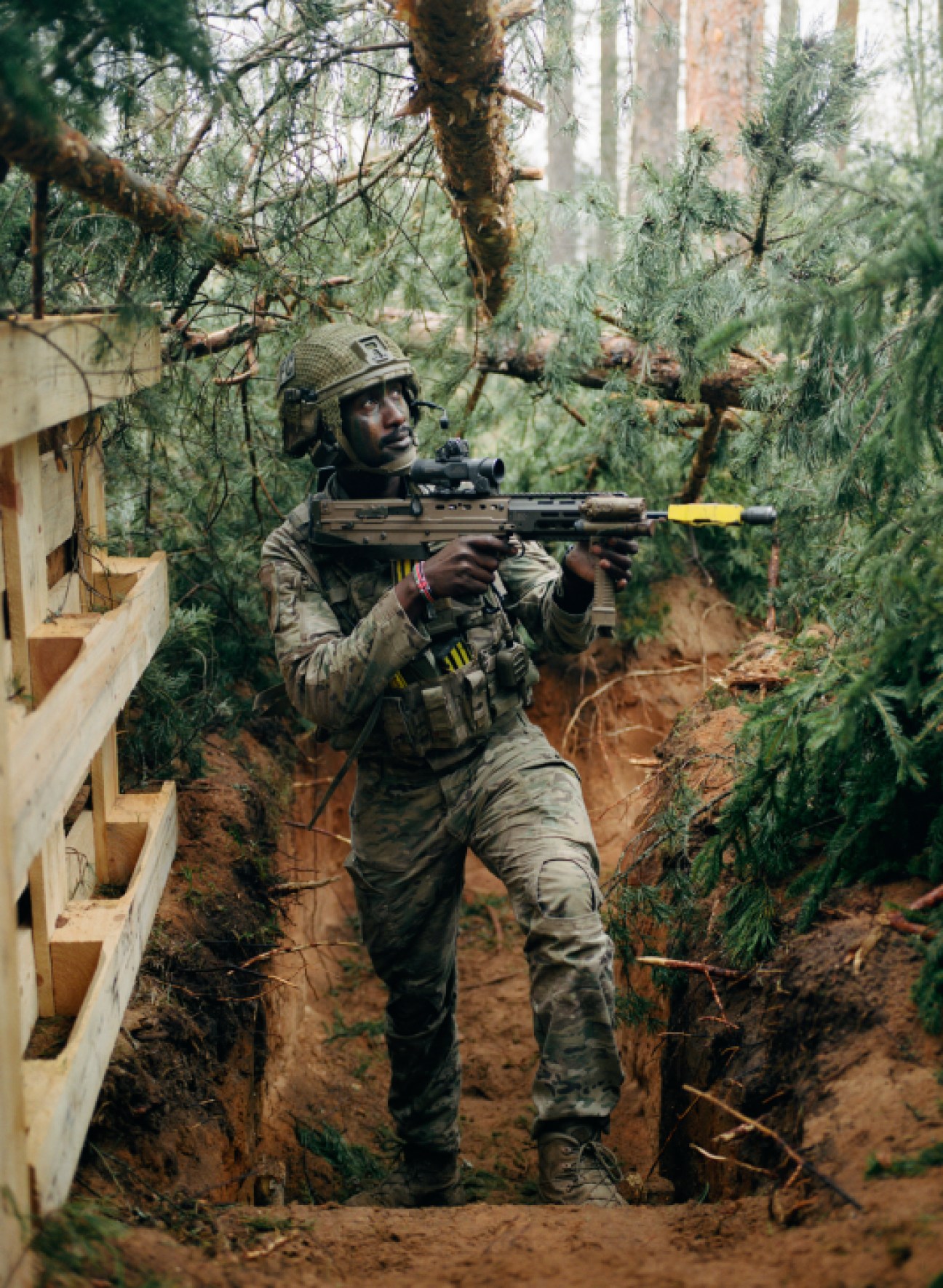 British Army soldier Fue Bakani
British Army soldier Fue Bakani
Estonia’s geographical position makes it a frontline state in Nato’s eastern flank. With a border adjacent to Russia, the stakes are high. Kristi Raik, a Baltic security expert and director of Tallinn-based think-tank International Centre for Defence and Security, explains as we meet her in the capital. “For Estonia, the threat is real and immediate,” she says. “These exercises are not theoretical drills but essential preparation. They signal that Nato is united and ready to protect its members.” Estonia has taken serious measures to enhance its military capabilities. “The country has pledged to up its defence spending to five per cent of its GDP, which is among the highest in Nato,” she adds. “It has also developed rapid evacuation procedures and integrated its civilian population into resistance plans.” During Exercise Hedgehog, an evacuation drill simulated how civilians and military personnel would respond to sudden alerts. Everyone’s mobile phone, including the one that Monocle used, received a warning message from the Estonian Defence Forces (it also assured that there is “no real danger!”) and sirens were tested in cities across the country. “It’s about readiness – making sure everyone knows what to do if the worst happens,” says Raik.
The war in Ukraine has deeply influenced Nato’s approach. It demonstrated that modern warfare is brutal and fast paced. “The conflict has taught us invaluable lessons,” says Waring. “It has shown the importance of rapid deployment, interoperability and sustaining supply chains under pressure.” To that end the UK maintains a brigade on 30-days’ notice to deploy to the Baltic states. “We’re ready to move quickly to support Estonia and other allies,” he says. “This isn’t just symbolic; it’s about real preparedness.” This fast deployment was out to a test during Hedgehog. A 1,700-strong battlegroup was deployed from the UK to Estonia in just 48 hours, by rail, sea, road and air. “A credible deterrent requires more than presence – it needs the capability to reinforce quickly and effectively,” says Captain Markus Worthington from the Royal Army, as his platoon is practicing dismantling an explosive device near Camp Reedo in southern Estonia. In fact, rapid deployment is at the heart of Nato’s plans for the defence of its eastern flank. At the 2022 Madrid summit, the alliance shifted its strategy from the so-called “tripwire” approach to a more robust security posture. In practice, this means that the alliance pledges to defend every inch of Nato soil from the first hour instead of letting it fall into enemy hands and liberating it later.
Estonia’s defence strategy relies heavily on reservists: civilians who have completed their mandatory military training and are equipped to mobilize quickly. Integrating them into Nato’s security plans for the country is one of the main objectives of Hedgehog. Monocle meets some of the reservists deep inside the trenches as they guard against an imaginary enemy force. “I finished my military service three years ago and was called upon to refresh my training at Hedgehog,” says 21-year-old student Peeter Lääniste. He will miss two weeks of university and will have to make up for lost time by taking several exams but did not hesitate when called upon. “Living next to Russia, you have no excuses to stay at home during exercises such as these.” The reservists’ training is overseen by Lieutenant Colonel Madis Koosa. “We are a small nation, so civilian fitness and military skills are crucial,” he says. “Regular training and drills ensure that they’re prepared to respond.” As we’re conducting the interview, Nato fighter jets fly overhead, generating a loud noise. Koosa, who grew up next to an airbase in occupied Estonia (the Soviet Union occupied Estonia from 1944 to 1991), becomes visibly emotional. “As a child, I used to hate the sound of the Soviet planes but the sound that we just heard is now the sound of freedom.”
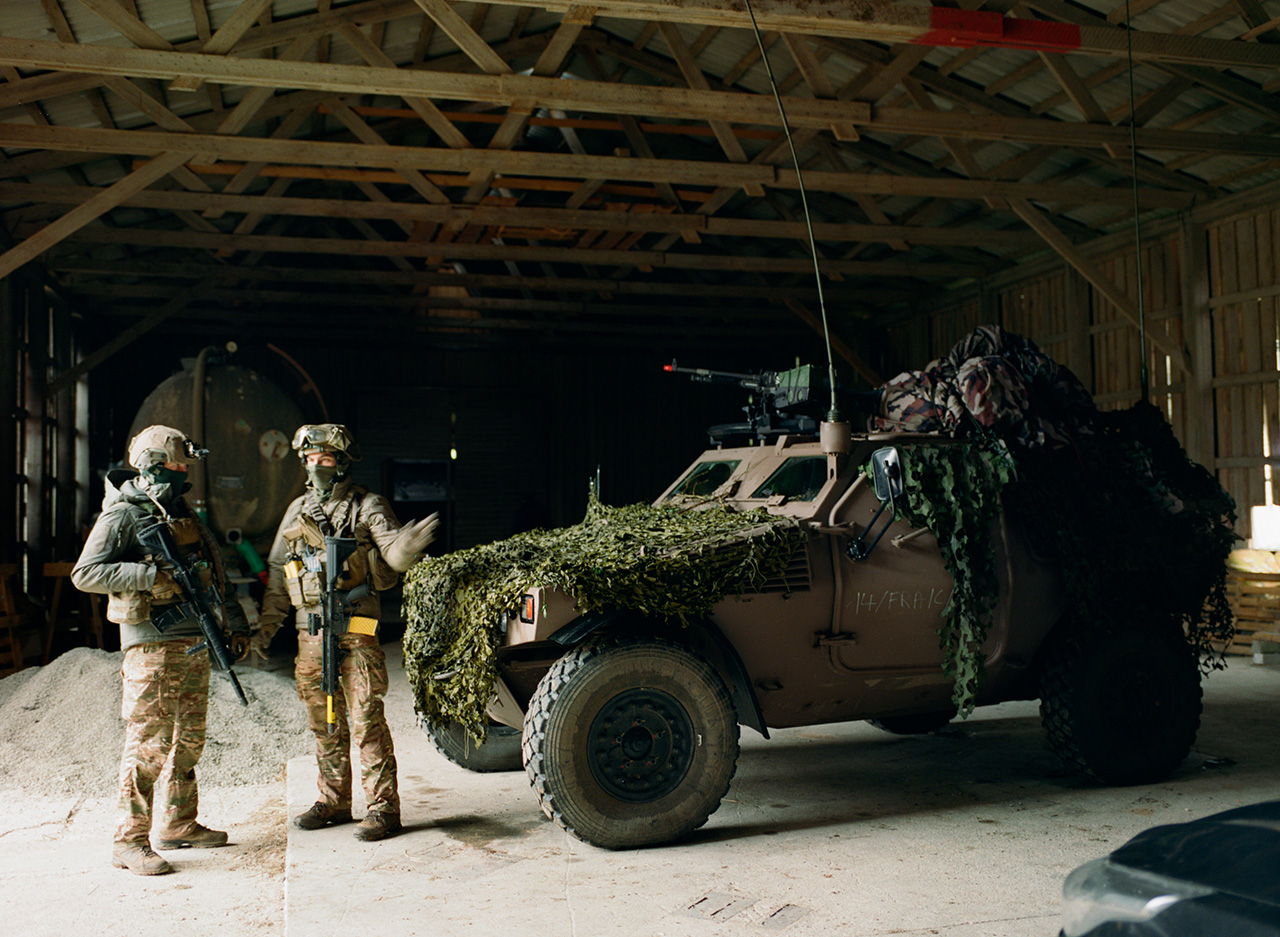 French marines hiding from reconnaissance drones
French marines hiding from reconnaissance drones
 Baltic security expert Kristi Raik
Baltic security expert Kristi Raik
 The village of Rõuge near the Russian border
The village of Rõuge near the Russian border
At its core, Exercise Hedgehog is a political message as much as a military one. “With forces from across the alliance, including new member states, we want to show Russia that Nato stands united,” says Koosa. “An attack against Estonia is an attack against the strongest military alliance to ever have existed.” Kristi Raik concurs. “There is a lot of talk about whether or not Nato is united and if the US is still determined to defend its allies,” she says, yet stresses that this is just rhetoric. “Russia wants to see Nato splintered but an exercise such as Hedgehog shows that Nato is, on the ground and in practice, still united and strong. It’s a deterrent to any potential aggressor.”
Despite the united front during simulated war games such as Hedgehog, Nato faces significant challenges. Disagreements at the top level, even if just rhetoric, make the alliance appear in disarray. With the US support for Nato in question, there is a sense that the European countries must shoulder more responsibility and up their defence spending. Then there’s the human factor. On paper, Nato is far superior than its adversaries but the fact is, as Kristi Raik points out, Nato has never fought a war as a unified front. Meanwhile, adversaries such as Russia bring combat experience and troops that have been battle-hardened in Ukraine. “The question is whether Nato’s political will and military readiness will hold up in a crisis,” she says. “The exercises are vital but only part of the picture.”
As our visit ends we meet a 19-year-old Scottish fusilier named Parker, hunched down in a bunker, hiding from drones piloted by Ukrainians with recent combat experience. His sentiments offer a reflection that captures the mood of the entire exercise. “Being here on the ground, seeing the positions that we’d take in an actual conflict if Russia attacked and being so close to its border, sharpens your focus,” he says. “This feels more real than any training that I’ve done before.”
In the quiet Estonian countryside, far from global headlines, Nato is putting its unity, vigilance and resolve to the test. The outcome will have consequences far beyond these forests and fields – on the future security of Europe itself.